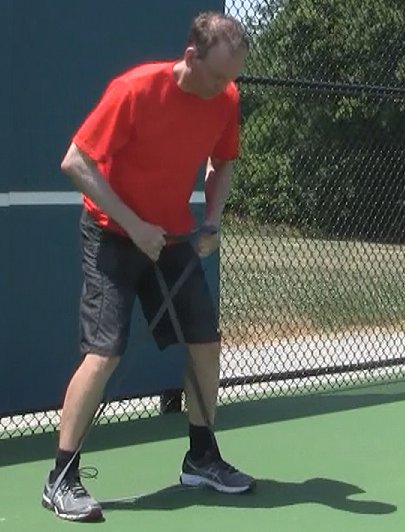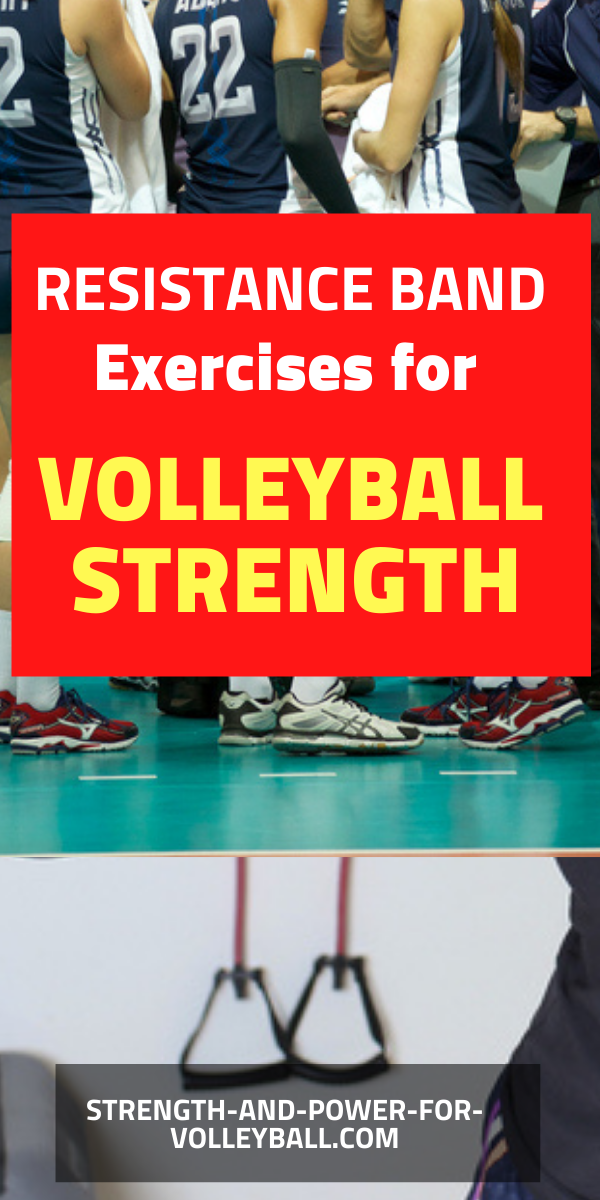- Home
- basic volleyball equipment
- band training
Band Training Product Review
Band training is a fun and safe way to workout for volleyball. Resistance bands are a great tool for increasing speed in volleyball.
Band Training vs Tradition Weight Training
To be fast you need to move fast. Slowly lifting huge weights without an emphasis on force production will lead you to become strong and slow.
Often trainers make the mistake of creating weight lifting programs that focus on adding heavier weight while totally ignoring relative strength.
The key to increasing power is having the ability to apply the most possible force on every repetition. This is the advantage of using bands for strength training.
Did you know your body has a protection mechanism that actually causes a contraction as you near the end of the movement? This is to help prevent joint injuries. This is why it's important to apply resistance throughout the entire range of motion rather than a specific point in your weightlifting. This is the difference between exercising using free weights vs resistance bands.
Bands also have the advantage of teaching your body to become more efficient as you accelerate toward reaching the end of movement.
Training with resistance bands will take your performance to a higher level and allow you to finish strong!

X-Band Walks
The Resistance Bands I Recommend
The bands I recommend the most are called Superbands. I've had my Superbands for over 15 years and they are still in great shape.
Superbands are thick, extra strong bands that can be used for a variety of exercises.
The thicker the band, the stronger the band and the more resistance the band provides. The 1 to 1 and 1/2 inch bands are good for exercises that require heavier resistance.
1/2 to 1 inch size bands are good for exercises that require less resistance.
My favorite exercises to use with these bands are:
- X-band walks
- assisted pull-ups
- band-chop
- band-lift
- hamstring stretch
- standing rows
- standing hip abduction
- standing hip adduction
- hip/knee flex exercise
If you enjoyed these workout tips and would like to keep it close to you at any time, just save this pin to your Pinterest Volleyball Training Board.
Rotational Power for Volleyball
If you're looking to spike harder, focus on improving rotational power.
Rotational power refers to the movement that creates energy built up from the lower body, transferred to the upper body then through the hands.
Basically, these are the steps...
- Static energy built up on rear leg
- Kinetic energy transfers through the front leg (front side bracing mechanic)
- Torque is created between the rotating pelvis and torso (hip/trunk separation)
- Energy is dispelled through the upper body as the torso and arms continue rotation
Band training can be important especially when there isn't an area available to throw medicine balls.
And some teams have many athletes working, making it impossible for everyone to use medicine balls at the same time.
It's also important to mention that when you train rotational power, you must train the core in a fashion that prepares it to efficiently transfer rotational energy from the lower body through the upper body.
This becomes especially important when spiking. The power you generate when spiking starts first with the approach. It's the speed, strength, and quickness of the feet that creates energy that travels up through the body into the hand that creates a powerful spike. This is why a lot of times a hitter develops a harder hit just by improving the technique of the spike approach.
Using Band Training to Increase Rotational Power
No matter what you do, be sure to focus on improving strength. It may be a lot of fun and really cool to train at high speeds, but you won’t get much out of your training if you can’t press, squat or pull very well.
